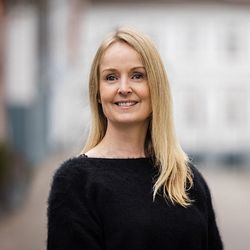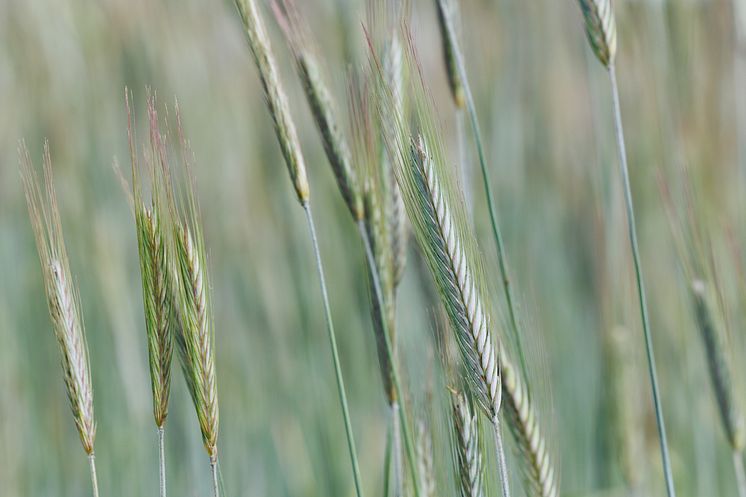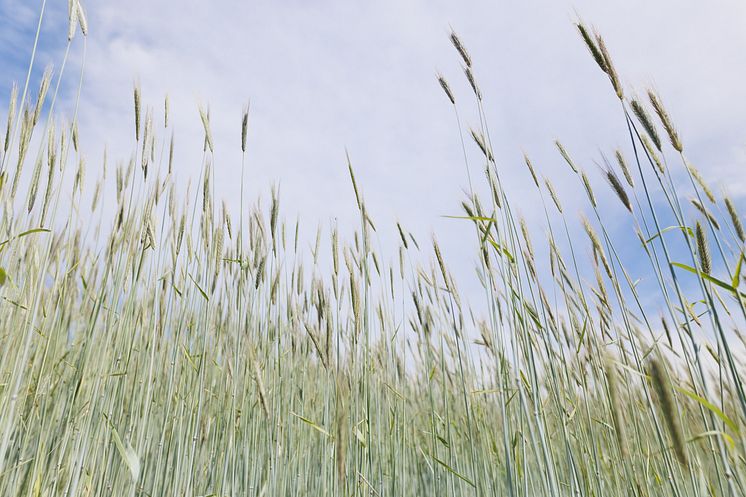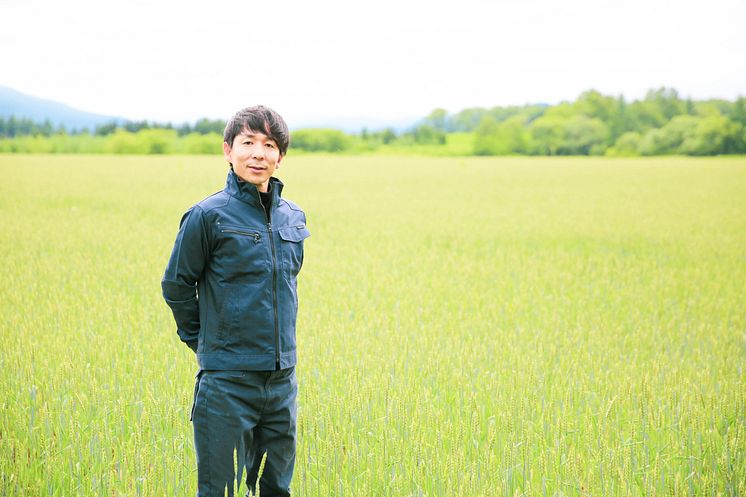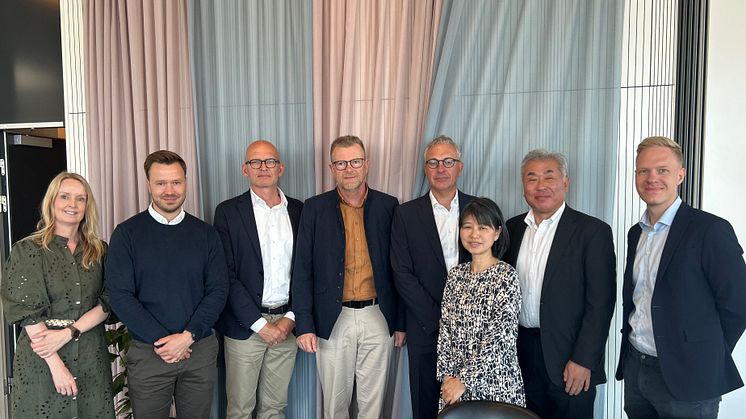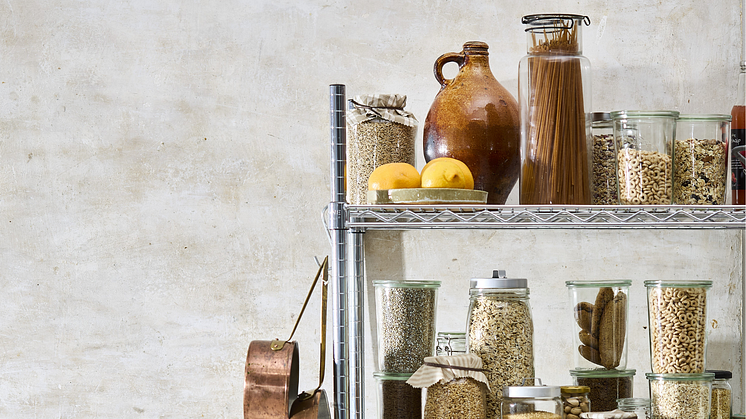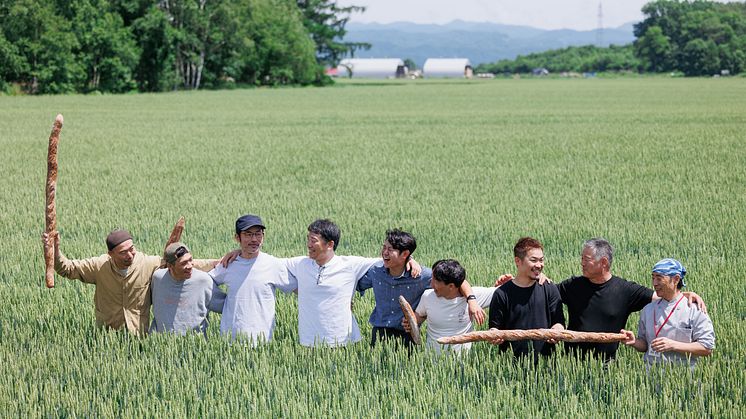
Nyhed -
Rugbrødsboom i Japan
All of us from the Danish Whole Grain Partnership, who attended the teams-meeting with Mr. Ito were captivated by his story about his dedicated work in promoting rye, rye bread, and regenerative agriculture in Japan. After the meeting, we had only one wish, and that was to learn more. Therefore, we contacted Mr. Ito again to do an interview - so we can spread his and Agrisystem Co. Ltd's perspectives to as many people as possible.
Mr. Ito biography
Born in 1981 in Obihiro, Hokkaido, Hidehiro Ito studied business administration in Canada after graduating from a local high school. Upon returning to Japan, he worked as an English instructor and was involved in the launch and operation of Natural Coco Co., Ltd., an organic shop and café. In 2008, he joined Agrisystem Co., Ltd., where he initiated a flour milling business as a new venture. He has served as President and CEO of the company since 2019.
Ito advocates the concept of One Table, which connects producers, manufacturers, distributors, and consumers around a shared vision of food. Under this philosophy, he develops initiatives aimed at addressing social issues caused by disconnection in the food system.
Currently, he leads the Regenerative Bakery Project, working alongside producers and bakery chefs to build a distribution ecosystem that supports regenerative agriculture—guided by the values of One Table.
What is the history of the company Agrisystem and what is your focus within the company today?
With the founding philosophy of “Living Soil – Healthy Crops – Human Health” and the management vision: “For the Children of the Future”, Agrisystem Co., Ltd. is dedicated to building a safe and sustainable regional food system. The company collaborates with approximately 500 producers across Hokkaido to promote and expand regenerative agriculture.
Since its establishment, Agrisystem has developed the “Fieldman System,” a consulting framework that supports the production of high-quality crops based on the principle of cultivating living soil—without relying on chemical fertilizers or pesticides. The company supplies safe, traceable grains such as wheat and legumes to manufacturers, specialty stores, and bakeries. Agrisystem also operates several related businesses:
Tokapchi Co., Ltd., which manages seven organic farms across Hokkaido totaling 370 hectares, integrating crop production, livestock farming, and organic dairy processing.
Natural Coco Co., Ltd., an organic shop and café that promotes a sustainable lifestyle.
Fudokasui, an artisanal organic bakery using natural yeast, hand-kneading dough in wooden barrels, and baking in a wood-fired oven.
In addition, through the Hokkaido Organic Village Association, the company is working to expand a network of over 60 organic farmers and processors across the region.
Looking ahead, Agrisystem envisions the creation of a 1,000-hectare organic farming community—the Organic Village—as a regenerative, circular model of rural society.
As President, Hidehiro Ito’s role is to act as a bridge between producers, processors, distributors, and consumers—passing on a richer food culture and a healthier environment to the next generation.
How do you work with regenerative agriculture and why is it important to you and all of us?
Agrisystem promotes regenerative (ecosystem-restorative) agriculture based on its founding philosophy, “Living Soil – Healthy Crops – Human Health,” and its management principle, “For the Children of the Future”. I will just highlight some of our projects:
Practical Initiatives in Regenerative Agriculture
Soil regeneration without relying on chemical inputs. Through its original “Fieldman System” Agrisystem provides on-site guidance to revive soil structure (aggregate formation) and activate microbial ecosystems, enabling the soil’s natural strength to flourish.
Diverse cropping, crop rotation, and green manure introduction: At Tokapchi Farm in Hokkaido and through partner farms, experiments with more than 16 types of green manure crops enhance biodiversity and nutrient cycling in the soil.
Activities of the Regenerative Bakery Project
Under the philosophy of One Table—bringing producers, millers, bakers, and consumers to a shared table—Agrisystem is developing a system that connects regenerative agriculture to the production and enjoyment of bread. Our key activities:
Setting and visualizing Regenerative Goals which include reducing pesticide use, cutting chemical fertilizer use, eliminating neonicotinoid pesticides, adopting cover crops and compost, and promoting no-till practices.
Promotion of rye cultivation and consumption
Highlighting rye’s ability to improve soil health, Agrisystem collaborates with chefs and universities through symposiums. They also promote the Danish heritage bread rugbrød as a cultural and practical entry point for expanding rye consumption in Japan.
Nationwide network building
Strengthening partnerships with bakeries across Japan to form and expand the Regenerative Bakery Community. In this way, Agrisystem engages in a comprehensive regenerative approach—from soil-building on farms to creating systems of food distribution and culture that reach the consumer’s table.
This is an ongoing, nationwide effort to reconnect food, the environment, and the well-being of future generations.
What role does rye play in the context of regenerative agriculture in Japan?
In Japan, rye has traditionally been used primarily as a green manure crop. More recently, it has also begun to be utilized for no-till farming practices. The regenerative agriculture we promote is not based on herbicide-dependent methods; rather, it is a combination of regenerative agriculture and organic cultivation.
Given Japan’s humid climate, there are concerns that no-till farming may not be well suited to our environment. Therefore, we are cautiously exploring its potential. Even if full no-till is not feasible, we have found that minimizing tillage can still effectively preserve humus in the soil, maintain an ideal granular structure, and support biodiversity. These outcomes seem to be closely tied to Japan’s unique climate and soil conditions.
Traditionally, when rye is used as a green manure, it is plowed back into the soil just after it starts heading. However, because we place great importance on building strong relationships and mutual understanding between producers and end users, we intentionally grow rye through to harvest. This provides an opportunity for bakeries to engage more deeply with the idea of environmental regeneration.
What does it take – in your experience – to increase whole grain consumption in Japan?
We have been promoting an initiative called the “Brown Bread Campaign” in the bakery industry for several years now. There are several reasons why I value whole grains. One is rooted in the Japanese concept of "ichibutsu zentai," which emphasizes consuming food in its entirety. It is believed that eating the whole, balanced form of a food—without discarding any part—supports optimal health.
From a nutritional standpoint, this idea is also significant. Most of the nutrients in grains are concentrated in the bran and germ, yet these parts are often discarded in refined products. I also believe that the minerals found in bran and germ are an essential part of the grain’s flavor itself.
In addition, constipation—a common issue among modern Japanese people—is largely due to a lack of dietary fiber, which whole grains can help address. Many of today’s widespread health problems in Japan, such as allergies, cancer, and diabetes, are thought to be linked to poor gut health. The consumption of refined grains only exacerbates these conditions. It’s also known that whole grains help to moderate blood sugar spikes, which is particularly important for those with diabetes.
That said, health issues are caused by multiple interrelated factors. So, beyond eating whole grains, we believe it is also essential to eliminate herbicide residues from food, and to reduce long-term consumption of genetically modified crops and their derivatives.
These are the messages we share with bakery chefs as part of our work
Can you share a few examples/cases on what you have done to increase the consumption of bread from regenerative agriculture?
The initial spark came from a symposium we held with 11 bakery chefs from across Japan. The theme was: How can we expand rye production to promote regenerative agriculture in Japan? And how can we encourage people to enjoy rye bread in a country where rye culture is not yet established?
Each chef brought their own version of rye bread—designed to suit Japanese palates—and we held tastings while discussing strategies for popularizing rye bread. At the same time, we gave a lecture on how rye can contribute to environmental regeneration.
This initiative later received the Grand Prize at the Sustainable Award hosted by Japan’s Ministry of Agriculture, Forestry and Fisheries, which helped raise awareness in the bakery industry about the importance of rye bread and regenerative agriculture.
Building on this momentum, we launched the Regenerative Bakery project. The goal is to expand a network of bakers across the country who are committed to "cultivating the soil for future generations." By incorporating agricultural products grown through regenerative farming into breadmaking, these bakers support healthy soil building and biodiversity. Slowly but surely, this vision has begun to resonate with bakers across Japan.
Bakers who share the desire to "nurture the soil of the future" and "protect children's health" are now connecting across regions. In turn, more producers are beginning to engage in regenerative agriculture—creating a positive cycle where farmers and bakers support one another, connected by a shared purpose.
To spread this movement further, we held study sessions in seven regions throughout Japan, with a total of 235 bakery chefs participating. However, at the time, many chefs—while eager to support the cause—were unsure how to translate that intention into action.
It was then that we met Sachiko Kuramoto.
She introduced Japan to rugbrød, a traditional Danish rye bread, and conveyed its depth and potential. Her presence had a transformative effect, clearing away much of the doubt and confusion that had lingered among the chefs.
It was almost as if a spell had been cast—chefs across the country, as if saying “this is what we’ve been waiting for,” began baking rugbrød with great enthusiasm.
As a result, Japan is now experiencing a major rugbrød boom in the bakery industry. Trade magazines are frequently featuring the trend, and thanks to the high-quality recipes included in Ms. Kuramoto’s published book The rugbrød, even first-time bakers are able to produce delicious, well-made rugbrød right from the start.
This influence has begun to reach consumers as well, with a growing number of people now baking rugbrød at home. In May of this year, Ms. Kuramoto held a rugbrød-focused workshop in collaboration with renowned Japanese bakery chefs. It became a hugely popular seminar, reaching its 60-person capacity in just 10 days. Many participating chefs left deeply inspired and are now incorporating what they learned into their daily baking.
What is your favorite whole grain product?
Currently, my favorite grain is rye. In particular, rugbrød, the traditional Danish rye bread, is what I consider an ideal superfood.
Rugbrød is incredibly easy to digest, gentle on the body, and yet very filling, making it a reliable part of my daily diet. It's also rich in dietary fiber and minerals, which greatly support overall health management.
